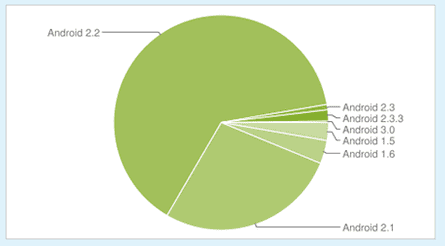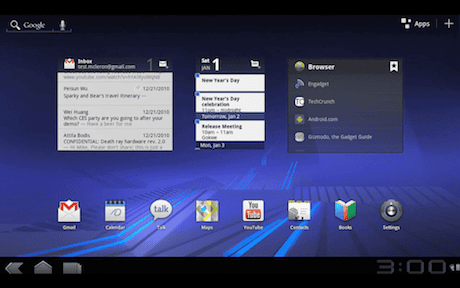It's official! The Xoom is a flop! Thus quoth Silicon Alley Insider, running its inky finger down a note that has emerged from Deutsche Bank, where an analyst - we'll see if we can join the dots for you - saw John Gruber's (of Daring Fireball) link to the Android Developer statistics, which show - at present - that more than 65% of Android devices which access the Android Market in the past 14 days are running "Froyo" 2.2, for example.. but only 0.2% are running "Honeycomb", the tablet-only Android version.

The analyst then, aided by some ComScore 2011 numbers on adoption of Android in the US site:comscore.com, and decided that the 0.2% showing there for Android 3.0 ("Honeycomb") translated into 100,000 sales of the Xoom (which has only been released in the US, and only in the 3G version until the Wi-Fi version joined it on 27 March).
Two questions: is that a reasonable deduction? And is that good or bad for the Xoom, which launched in the US on 24 February, just under six weeks ago?
Deductions first. The chart indicates that 6.2% of the phones that accessed the Market in the past fortnight (a phrase that you have to keep bearing in mind) used Android 1.5 or 1.6. For Android 2.1, it's 27.2%; for "Froyo" (2.2), it's 63.9%. For "Gingerbread" (2.3x), it's 2.5%.
And then you have Honeycomb bringing up the miniscule at 0.2% - ie, 2 in every 1,000 devices that accessed the Market in the past 14 days were on 3.0.
The comScore numbers say that in February, Android had 33% of the US smartphone market. And the US smartphone market by that stage was somewhere north of 45m devices - though likely just below 50m. Call it 48m for convenience.
If you assume that 33% of those 48m are Android phones, that's 16m. If you assume that all of those constantly access the Android Market at least once every 14 days, then 0.2% of the share (ie how many Xooms are accessing it) translates into 32,000 (because it's pretty much a certainty that someone unboxing their Xoom is going to have a look around the Market).
We can take that 32,000 as an absolute lower bound for the number of Xooms being operated.
But there are some obvious gaps in that calculation - the key one being that it assumes that all the Android phones in the world are in the US. That's clearly not true. So let's dig further: the analysts Canalys reckons that 33.3m Android handsets were sold in the fourth quarter of 2010 worldwide, of which 12.1m were sold in the US.
So it would be logical to think that to get absolute numbers for Android handsets accessing the Market, you should multiply the earlier number by three. So our 32,000 devices creating an 0.2% market share for Honeycomb becomes (once you take the rest of the world bumping up the total accesses to the Market, and so pushing down the share of Honeycomb) three times bigger: at least 96,000 sold.
So there's our first conclusion: the 100,000 figure is reasonable. What's more, this is 100,000 in the hands of owners, rather than "shipped" (which is where Samsung has been guilty of a certain amount of, um, pushing at the truth envelope; there's little data about how many people are actually using the "2 million" Galaxy Tabs that escaped its factories).
Could the number be higher? Very easily: if a new Xoom owner looks in the Market and sees no apps of interest, they won't go back. And there's not many 3.0 apps. New Android phone owners, on the other hand, have a very large number of apps to choose from: they'd be more likely to make return visits. So the number of Xoom accesses could be artificially deflated.
Unfortunately, there's no way to know by how much. What we're confident of is that 32,000 is a lower bound and that 100,000 has a finger-in-air feel of "about right".
Now the next question: is that number good or bad? Sure, it's nothing like the iPad's first incarnation, where it sold 3m iPads in its first 80 days. (The Xoom has been on sale for about half as long.) But it feels absurdly premature to write it off. The Wi-Fi only version may be suddenly doing gangbusters (unfortunately there aren't historical graphs of the Android Market access graph); the 3G version might have been a dog (and given its much higher price compared to the iPad, that seems to have been the case; the Wi-Fi version is more keenly priced). There's plenty of life to be found in the tablet market yet.
And we know at least that the Xoom is actually selling. Now the challenge is on for Google to prove that it has a viable tablet OS - and for its hardware partners to see if they can match Apple's pricing. Will RIM and Samsung manage it?

Comments (…)
Sign in or create your Guardian account to join the discussion